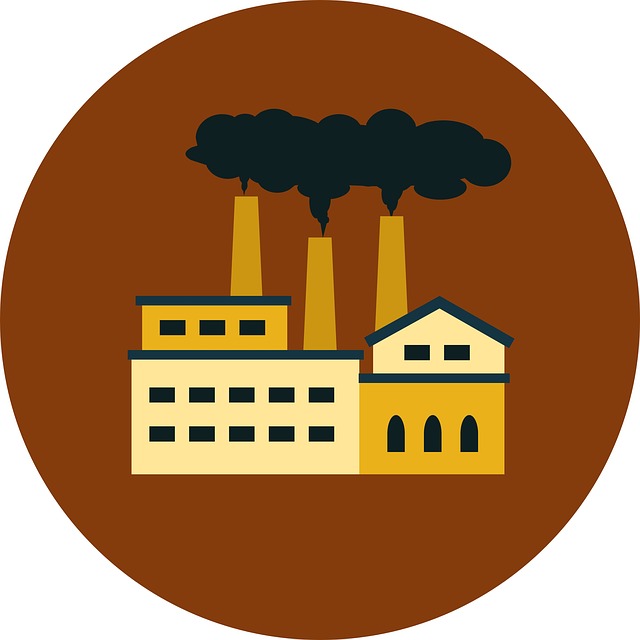
The role of flue gas scrubbers in incineration
If you trace the history of incinerators, you will find it all started with open burning of garbage, followed by brick housed chambers where garbage was dumped and set fire to. This happened mostly in populated cities of the world.
When populations increased and industrialization advanced, more and more types and quantities of wastes were produced. It was found that the brick housed chambers were insufficient to handle different wastes. Particularly with reference to industrial hazardous wastes, the flue gas produced during incineration was causing plenty of problems, including smoke, particulates and emission of greenhouse gases.
From the fourteenth century until recently, the primary air pollutants have been coal smoke and gases released in industrialised areas. During the reign of Edward II (1307 – 1327), a man was put to torture ostensibly for filling the air with a `pestilential dust` resulting from the use of coal. In subsequent years, as more and more instances came to light of life threatening smoke and cases, oil and gas replaced coal, providing some form of relief.
Environmental regulations in the U.S. can be dated back to 1898 with the River and Harbors Appropriations Act. During this century, the amount of environmental regulations had accelerated and broadened in scope. The Federal Water Pollution Control Act of 1948 was followed by the Clean Air Act Amendments of 1990, which mandates and enforces air pollution reduction, issues plans to meet air quality standards and specific compliances.
In the light of this background, let us also start with the earliest form of air pollution control equipment.
The Gravity Settler was one of the first devices used to control particulate emissions. It is an expansion chamber where particulate velocity is reduced and the particles allowed to settle out under the action of gravity. This however was limited to the removal of large sized particles, say 40 to 60 µm in dia.
For finer dust, the emergence of new equipment called the Cyclone came to be used. The removal efficiency here was much better than settling chambers. Cyclones were more complicated in design than gravity settlers but are a relatively low cost method of removing particulate matter from exhaust streams.
There are many types of cyclones from tangential entry to axial entry and the dimensions of the cyclone determine the range of particle sizes collected in the device.
Electrostatic precipitators (ESP) entered the field of particulate control when it was felt that particulate emission from large scale industrial processes has been increasing since the latter part of the 19th century.
Of the two types of ESPs, the high voltage single stage precipitator was the more popular type for collecting both solid and liquid particulate matter from facilities such as smelters, steel furnaces, cement kilns, municipal incinerators and boilers.
Bag houses are another type of successful filtration equipment that came into existence quite some time ago. It involves removal of dust from dust-laden gas by passing the dirty gas through a filtration medium. The cleaned gas comes out from one side of the medium, while the dust is collected on the other side. Pulsed jet design ensures regular and frequent compressed air supply, controlled by solenoid valves to shake the filter bags and remove the collected dust, so that the bags do not choke.
Venturi Scrubbers use a liquid for scrubbing flue gas of particulates. Water sprays are injected into the gas stream. The water contains a neutralizing agent to maintain pH level. These scrubbers also remove effectively gases like HCl or SO2.
These scrubbers also have another important function and that is to cool down incoming flue gas temperature from about 1000 deg to about 200-250 deg.C. For this reason and also for handling acid containing water, these scrubbers are generally made of a specific grade of stainless steel. Any compromise on the quality of the base material will result in poor quality equipment which will have a very short working life.
When it comes to particulate control, the venturi scrubber is quite efficient because the design of the scrubber generates a venturi effect, thereby increasing the velocity of the flue gas at the same time with a large pressure drop. This results in encapsulation of the particles in water droplets, thus ensuring capture of medium to large particles.
There are many systems available commercially. The differences in these systems are the method of water injection and throat design. The throat could be fixed or adjustable.
Selection of a venturi scrubber design would be based on the characteristics and components of the flue gas stream.
Higher levels of particulate emission control can be achieved with a combination of gas cooling, bag filters / bag houses and acid gas scrubbing. A Gas Cooler will do the initial particulate control and reduction in the incoming flue gas temperature.
The main difference here, compared to the Venturi, is that in the Gas Cooler, all the flue gas heat will be almost fully saturated by the water spray, leaving very little or no water for discharging.
The flue gas will enter the Bag house in an almost dry condition, where the particulates will be collected. The efficiency of the bag house will be 99% +. Hence it is possible to achieve very low levels of particulate emission with this equipment.
After the Bag house, the flue gas now goes into the Acid Gas Scrubber which will do the final scrubbing of the flue gas of SO2, HCl and NOX.
While this configuration can achieve excellent emission levels, it has to be ensured that the equipment quality has to be top drawer and planned maintenance of the equipment is a must. It has to be ensured further that there is control automation in place, which alone can monitor and keep in check various parameters like temperature, water flow and regular cleaning of the bleed is also a must.


